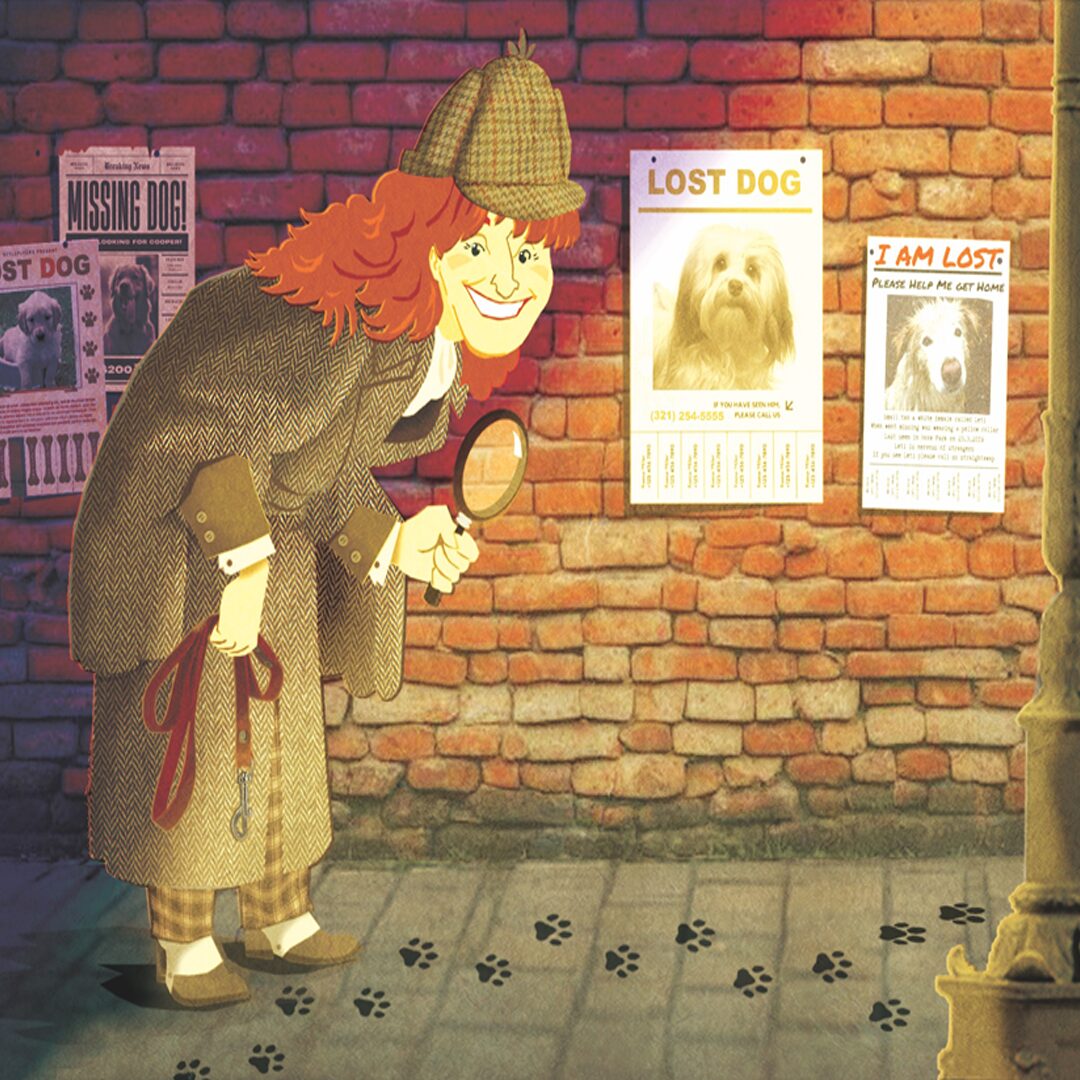by Diane Roberts | June 3, 2021
Discovering the Floridians Who Came Before Us
In a state that often turns a blind eye to its complex history, what happens when we stop to explore the land beneath our feet?

Sixty-four years ago, after the foundations for my family house were dug, but before any concrete was poured or bricks laid, my mother pulled on her rubber boots and walked around in the aftermath of a Florida rainstorm. She picked up projectile points—ax heads, flint tools, and broken bits of ceramic vessels, some polished black, some incised with spirals or wave patterns—out of the carnelian red clay. An archaeologist friend of my father’s looked at my mother’s bucket of finds and pronounced most of them part of Fort Walton culture, dating from 1000 to 1500 A.D., though there was also a reddish hunk of fired clay that might be from the Norwood peoples, made in Florida around the same time that Hatshepsut ruled in Egypt and the Mycenaeans conquered Greece, 4,000 years ago.
Florida is about not feeling bad about anything, be it our polluted waters, our history of racism or our regressive tax system.
Florida markets itself as a place that’s somehow beyond history, a place where we worship the new. I’m not saying we don’t appreciate the few antique structures that have managed to avoid being torn down for a highway, a hotel or a strip mall. The City of Fort Lauderdale cherishes its century-old Bonnet House Museum & Gardens, perched on 35 acres of unspoiled barrier island between the Atlantic and the Intracoastal Waterway and convenient for the Ritz Carlton, the Pelican Grand Beach Resort and the Galleria Publix. (We prefer our heritage to be close to our comforts.) We preserve a few plantation houses from the 1850s and the “vintage” mermaid attraction at Weeki Wachee; we try to preserve our remaining Indian mounds and Spanish forts in state parks. But most who come to live in Florida don’t really want to think about history while sitting on the sand at Sanibel or riding the Twilight Zone Tower of Terror at Disney or contemplating the fourth hole at the Calusa Pines Golf Club. Florida is about immediate gratification. Florida is about not feeling bad about anything, be it our polluted waters, our history of racism or our regressive tax system.
History Can Hurt
Yet despite our need to pretend that the state operates in the eternal present of a sunny day at the beach, Florida is very old. Human beings have lived on this peninsula for more than 14,000 years. And despite our frequent efforts to ignore or erase our long yesterday, the land bears the mark of everyone who has made a home here, from the Native Americans who created mounds that still rise high in quiet woods in Lee County, Tampa Bay, and the Panhandle; to the Franciscan missions of the Spanish once laid out across North Florida like a ribbon but now only visible in foundation lines you can trace if you try; to the English who scattered broken blue and white china wherever they went; to the cotton aristocracy who descended from Virginia and the Carolinas with thousands of enslaved people to work the fields and build those fine columned manor houses you can still see from Manatee County north to the Georgia line.
I never had the option of ignoring Florida’s past: It was—and is—a constant presence.
I’ve always been puzzled by my fellow Floridians’ reluctance to face history. Maybe it’s because if they, like me, are descended from European colonizers, they realize that our ancestors killed to “settle” our Florida land. Sometimes the killing was on purpose, with swords, rifles or fire; sometimes it was inadvertent, with pathogens the native people had no immunity from. Even those whose grandparents or great-grandparents came through Ellis Island with nothing but their talents and moved to snowless Florida as a reward for a lifetime of work know that their whiteness has given them a privilege Florida’s indigenous people, and the black people whose labor made the state prosperous in the 19th century, could never enjoy. History can hurt. It’s much more fun to drink a sunset-colored cocktail poolside. If there have to be references to the past, let them be fictional, like the “historical markers” that dot The Villages, that gigantic Central Florida retirement community, commemorating a nonexistent 19th-century moonshine maker called “Silencio,” a fake “Cracker” cabin, and, on the boat tour of Lake Sumter, Chief Billy Bowlegs, “a friend to whites who lived on this shore”—a shore that did not exist until the developers of the Villages dug that manmade lake. In fact, Billy Bowlegs, whose name in his own language was Holata Micco, led his people against the land-stealing whites in the Second and Third Seminole wars.

I never had the option of ignoring Florida’s past: It was—and is—a constant presence. My father’s family has been in the state since 1799, when Spanish governors were giving away free land. My mother’s people came in the 1820s, after the Adams-Onís Treaty made Florida a territory of the United States. My grandparents and great-uncles and aunts told stories about the Seminole wars in the 1830s or the 1864 Battle of Marianna or the time our distant cousin Enid Broward was crowned Tallahassee May Queen in 1907 as if they were actually present. The past lived in our house in the rocking chair made in Washington County for my mother’s great-grandmother, and in the scruffy photocopy of the deed given my many-times great-grandaddy François Brouard (later known as Francis Broward) by Charles IV, and in the ground the house sits upon. If you dig down 10 or 12 inches you will still find pottery shards, most no bigger than a quarter, some older than the Bible.
People have always lived on this land. It was a pecan farm in the early 20th century; before then, a cotton plantation; and before then, part of the province of the Apalachee, one of the native peoples who resisted Juan Ponce de León, Pánfilo de Narváez, Hernando de Soto and their chain-mailed invaders charging through the palmettos and the piney woods of Florida 500 years ago, looking for souls and gold. Knowing this, and being part of a family as rooted in Florida as the bald cypresses in our swamps, conveys no special status, but does confer the obligation to remember, to tell the stories of these places before we pave over them, and to remind everyone else that there’s more to our state than the manufactured dreams of the Magic Kingdom, The Villages and South Beach. It’s much harder to destroy a place if you know its story.
The Ground Beneath Our Feet
Our house is about a mile as the blackbird flies from the mounds on the shore of Lake Jackson, one of the greatest works of Florida’s Middle Ages. Perhaps the juxtaposition of “Florida” and “Middle Ages” sounds a little weird, but what else do you call a city of seven great platform mounds built over several centuries beginning 1,000 years ago? That’s about the same time as Windsor Castle or the cathedral at Chartres. Windsor and Chartres are mighty expressions of secular, sacred and cultural power, places filled with meaning. The same can be said of the Lake Jackson complex. We tend to see Europe as a “civilization,” while the American Indians of our own continent are called “primitive.” You have only to look at some of the objects buried in the Lake Jackson mounds—the engraved shell pendants or the intricately decorated pottery or the copper panel depicting a falcon dancer, a man wearing a beaked bird mask and feathered cape—to see that the mound people of the Floridian Middle Ages cared about beauty and transcendence. The falcon dancer moves, drawn in lines as confident and haunting as a Picasso. In one hand he raises a rod or mace; in the other, he holds a severed human head by the hair. He is an intermediary between earthly existence and the afterlife—rather like the saints of the medieval church, to whom Christians prayed—and this image of him is a work of art as good as any announcing Gothic angel or lively gargoyle carved in stone at Chartres.

Florida is full of the wonders of its past—if you know where to look for them. Orlando and its environs may look like a toll road–tangled conurbation of pastel houses and theme parks, but if you get off I-4 in Eatonville, you’ll find the first self-governing black town in the United States, built by former slaves and incorporated in 1887. There stands the home of Florida’s great folklorist and novelist, Zora Neale Hurston. She set many of her stories there. Or how about big, shiny, kinetic Miami, with its glittering glass towers, galleries and mojito palaces? In 1998, a developer was tearing down an apartment complex on Brickell Avenue, planning to build chi-chi condos, when an archaeological assessment uncovered a large circle of 24 holes dug into the oolitic limestone. It was a kind of reverse Stonehenge built by the Tequesta people sometime between 1,700 and 2,000 years ago. We almost lost this treasure: the developer wanted to keep on building, important archaeological site or no important archaeological site. This is Florida, after all. The state finally bought the site—the developer made a tidy profit—and now this numinous place, inscribed in the very bedrock of our peninsula, belongs to all of us, no matter who our ancestors might have been. It’s called the Miami Circle, and you can visit this National Historic Landmark on Brickell Point.
If you want to uncover our past closer to home, whether you live near the old Camino Real, the “royal road” across North Florida connecting the Spanish missions of the 17th and 18th centuries; or in a town built on what used to be orange groves; or along the paths of Flagler’s or Plant’s railways, look at the ground beneath your feet. Somebody was there before you. Something existed there before it was your backyard. It was never a blank slate just waiting to be turned into a quarter-acre of St. Augustine grass. It has a story. Go find it.





